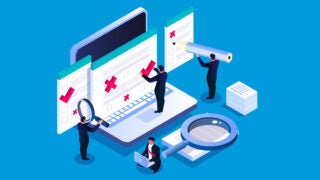What does the Obama meeting with Silicon Valley tech leaders mean for cybersecurity?
Experts in privacy law and computer science are available to share their opinions on the future of Internet policy.
Contact: Andrew Good at (213) 740-8606 or gooda@usc.edu; Amy Blumenthal at (213) 821-1887 or amyblume@usc.edu.
“It is essential that the Obama Administration and the technology companies collaborate to thwart the use of technology and social media by terrorist organizations without undermining the privacy expectations held by the public.”
Valerie Barreiro is director of the Intellectual Property and Technology Law Clinic at the USC Gould School of Law. She’s an expert in intellectual property, privacy issues and terms of use agreements. She can discuss corporate and governmental responsiblity to balance the need for privacy and surveillance of suspected terrorists.
Contact: vbarreiro@law.usc.edu.
“Classic cybercrime defenses such as access control, patching, firewalls and antivirus applications aim to protect data from theft, and to keep known malicious traffic off your network. They work most of the time, but they do not make you completely safe. An attacker can still crack a weak password one of your users has to get onto your network, bypassing any defense. He can still flood your network with high-volume traffic, which your infrastructure cannot process. A comprehensive defense means constant vigilance, prevention, monitoring, detection, failover and fast recovery.”
Jelena Mirkovic is an expert in cybersecurity with the USC Viterbi School of Engineering’s Information Sciences Institute. She is also Research Assistant Professor at USC. She is available to speak about cyberattacks, including from denial-of-service (DDoS), hacking and data theft.
Contact: sunshine@isi.edu.
Matthew French of the USC Information Sciences Institute can speak about the importance of tamper-free hardware and techniques to determine if hardware has been tampered compromised. He is involved with creating the first national center, the Secure and Robust Electronics (S.U.R.E) Center that moves beyond viruses and malicious programming in software to look at malicious programming in hardware for example, the insert of phony chips or faulty circuits.
Contact: mfrench@isi.edu.



